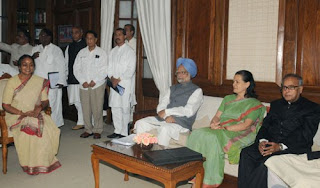Palaly has been receiving some attention in the news recently. Last week, in a move cementing relations between two neighbouring countries, India reportedly made a payment of Rs. 117 million to the Sri Lankan Government, for runway rehabilitation at Palaly.
It appears, however, that this project has been in the works for quite some time.
Former Secretary of Defence, Austin Fernando, reveals in his book My Belly Is White, that the runway rehabilitation was considered essential by the SLAF Commander, even during Former Prime Minister Ranil Wickremesinghe’s tenure.
The Sri Lankan Air Force (SLAF) noticed that, especially after the introduction of heavier aircraft into the Palaly airstrip, many vital aircraft components were damaged. This posed serious flight safety risks, and replacing the parts was expensive. Private operators, flying after the ceasefire agreement came into effect, reported similar problems. The SLAF Commander had asked for assistance to more or less redo the air base, according to Fernando.
Lack of funding
However, as Fernando observed, there was a severe lack of funding to get this project off the ground. The cost of this project would be around USD 5 million, hardly small change. He petitioned the Treasury, and when this failed, turned to the idea of foreign assistance.
The arrangement at the time was for a company under the Ministry of Highways to do the work, Fernando revealed. This company would be supervised jointly by the SLAF and a local consultant attached to the Road Development Authority (RDA). Quality control would be the responsibility of the Project Management Group of the Indian Air Force (IAF).
The parties involved hoped to finish the entire job within 11 months. It was to be in two phases. The first phase constituted resurfacing the runway, constructing drains and replacing the airfield lighting systems. The second would be resurfacing the other taxi tracks and aprons.
It was suggested that the Indian Government finance this project as a grant to the Sri Lankan Government.
Money with conditions
However it was at this point that Captain M. Gopinath, Defence Attaché of the Indian High Commission of Colombo, approached Fernando.
It appeared that the money India was willing to provide came with certain conditions.
The first request was that any further work on the runway should first be entrusted to India before considering any other country for assistance. This was not an unreasonable requirement. In fact Fernando wrote that considering the dire need for funding, he thought the government would be happy to comply with this request.
The second was that no other country be allowed to carry out a military operation from the Palaly runway, and the third that India be allowed to use the runway upon request.
India had legitimate security concerns in mind preventing countries such as, say, Pakistan from using the runway. However, what this effectively amounted to was that no other country could use the runway without India first agreeing to it. That in turn could mean that Sri Lanka might only have India to depend on in the event of an air attack on Jaffna. It was a tug-of-war between the need for sovereignty and the need to maintain good diplomatic ties with India.
“A soft intervention by a Gulliver could be heavy for a Lilliputian!” wrote Fernando on this dilemma. It appeared that others agreed with him. After discussions Fernando was told by Former Defence Minister Tilak Marapone that the Prime Minister at that time, Ranil Wickremesinghe, had decided that if India continued to insist on these conditions, they would use Sri Lankan funds instead. Wickremesinghe thought the money came at too high a price.
Series of letters
It was a series of letters between the Indian Prime Minister Rajiv Gandhi and President J. R. Jayewardene that saved the day. A letter written by Jayewardene pledged that foreign military and intelligence personnel would not be employed in a manner prejudicial to Indo-Sri Lankan relations. It also said that no ports would be made available for military use by any other country in a manner prejudicial to Indian interests. There was hope that the Indo-Lanka treaty would be enough to satisfy the Indian Government, and Marapone intimated that Former Minister Milinda Moragoda would speak to the Indian High Commissioner to finalise the agreement.
However, before this was finalised, Former President Chandrika Kumaratunga “grabbed the Ministry of Defence on constitutional grounds,” as Fernando puts it, and he was relieved of his post.
Whether India was satisfied with the Indo-Lanka Treaty or not is unknown, though Fernando wrote that from what information he had, the arrangement followed the terms Wickremesinghe had sought.
If India did indeed agree to forward a total of USD 5 million for runway rehabilitation, it would be a huge step in improving relations between the two countries. One can only hope that this time, there were no strings attached.
Subscribe to:
Post Comments (Atom)








No comments:
Post a Comment